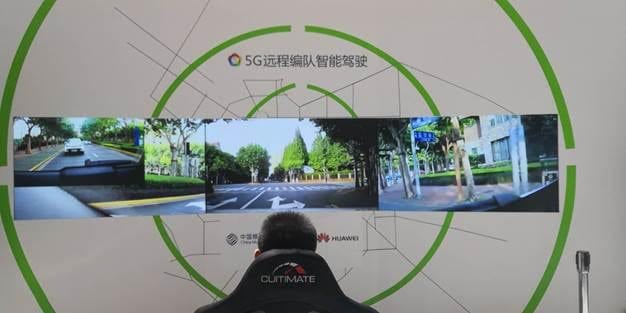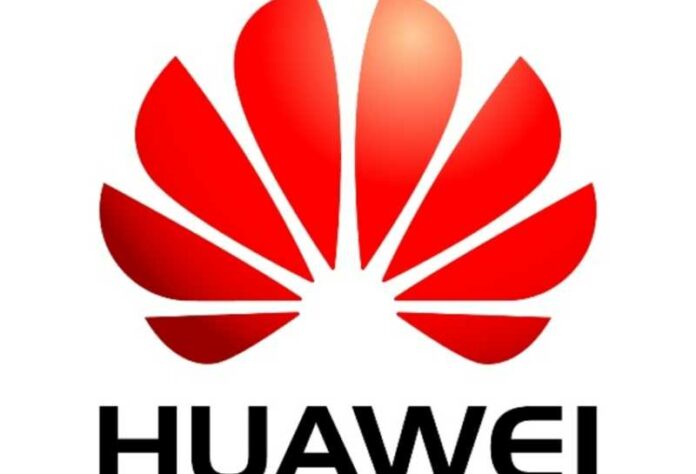During Mobile World Congress Shanghai 2018, China SAIC and Huawei jointly demonstrated the application of intelligent & connected vehicles using the low-latency network enabled by 5G Era LTE and the cellular vehicle-to-everything (C-V2X) technology. This demonstration involved a human operator who remotely and precisely controlled the out-field fleet via the driving control console located at the exhibition hall. The accuracy of control is realized with the help of low-latency technology that reduces the E2E latency to below 20 ms and the HD video backhaul technology.
The in-depth fusion of 5G Era LTE and V2X enables intelligent & connected vehicles to cruise in a fleet pattern and be fully informed of the latest traffic light signaling indications. The demonstration proves that the interwoven technologies serve as a solid foundation for the future rapid development of intelligent & connected vehicles. The intelligent & connected vehicles used in this demonstration are independently developed by SAIC. Wireless communications are based on China Mobile’s network, which is equipped with low-latency and HD video backhaul solutions offered by Huawei. China Mobile is also the provider of the E2E remote driving system that features the up-to-date edge computing technology. Intelligent & connected vehicles have rigid, high requirements for network latency, as remote driving, fleet cruising, and acquisition of vehicle-to-infrastructure (V2I) traffic light indications are error-intolerable. Driving instructions must be delivered without failure or delay, so as to handle all possible emergency situations on the road and ensure a safe and optimal driving experience. The low-latency solution, as a prominent component of 5G Era LTE, adopts air-interface scheduling acceleration and a multitude of additional technologies to meet stringent service requirements. The introduction of Short TTI further reduces E2E latency to within 10 ms. Carrier aggregation, 4×4 MIMO, and a wide range of other technologies help to realize HD video backhaul that in turn enables the remote driving commander to learn road conditions in real time.
Intelligent & connected vehicles have rigid, high requirements for network latency, as remote driving, fleet cruising, and acquisition of vehicle-to-infrastructure (V2I) traffic light indications are error-intolerable. Driving instructions must be delivered without failure or delay, so as to handle all possible emergency situations on the road and ensure a safe and optimal driving experience. The low-latency solution, as a prominent component of 5G Era LTE, adopts air-interface scheduling acceleration and a multitude of additional technologies to meet stringent service requirements. The introduction of Short TTI further reduces E2E latency to within 10 ms. Carrier aggregation, 4×4 MIMO, and a wide range of other technologies help to realize HD video backhaul that in turn enables the remote driving commander to learn road conditions in real time.
C-V2X boasts potential that can be later unleashed in the fields of automatic driving and smart mobile travel. C-V2X implements a wide range of connection services for vehicles, including vehicle-to-vehicle (V2V), V2I, vehicle-to-network (V2N), and vehicle-to-pedestrian (V2P) services. C-V2X is a powerful enabler for intelligent & connected vehicles, in terms of three-vehicle fleet management, traffic light indications, and other related aspects (as demonstrated on this occasion). In 2017, China Mobile, SAIC, and Huawei together successfully demonstrated the benefits of remote driving on the 5G new radio (NR) network. This year, the three parties again worked hand-in-hand to complete the verification of three typical applications of intelligent & connected vehicles (based on 5G Era LTE that comply with 3GPP Release 15).
These combined efforts aim to boost the incubation of intelligent & connected vehicle services to generate more business opportunities and serve millions of households. The three parties ultimately hope to ensure the materialization of safer driving with reduced power consumption, for people to live smart, better, and more convenient lives.
For more news and updates follow us on Twitter.











